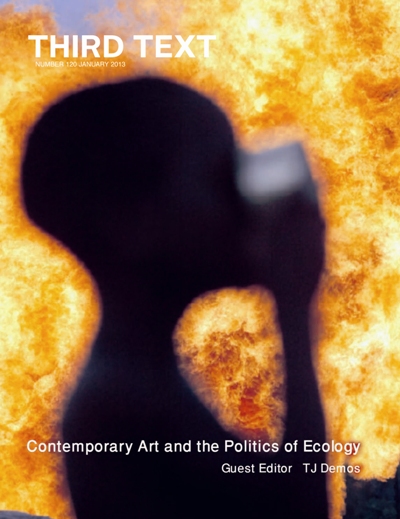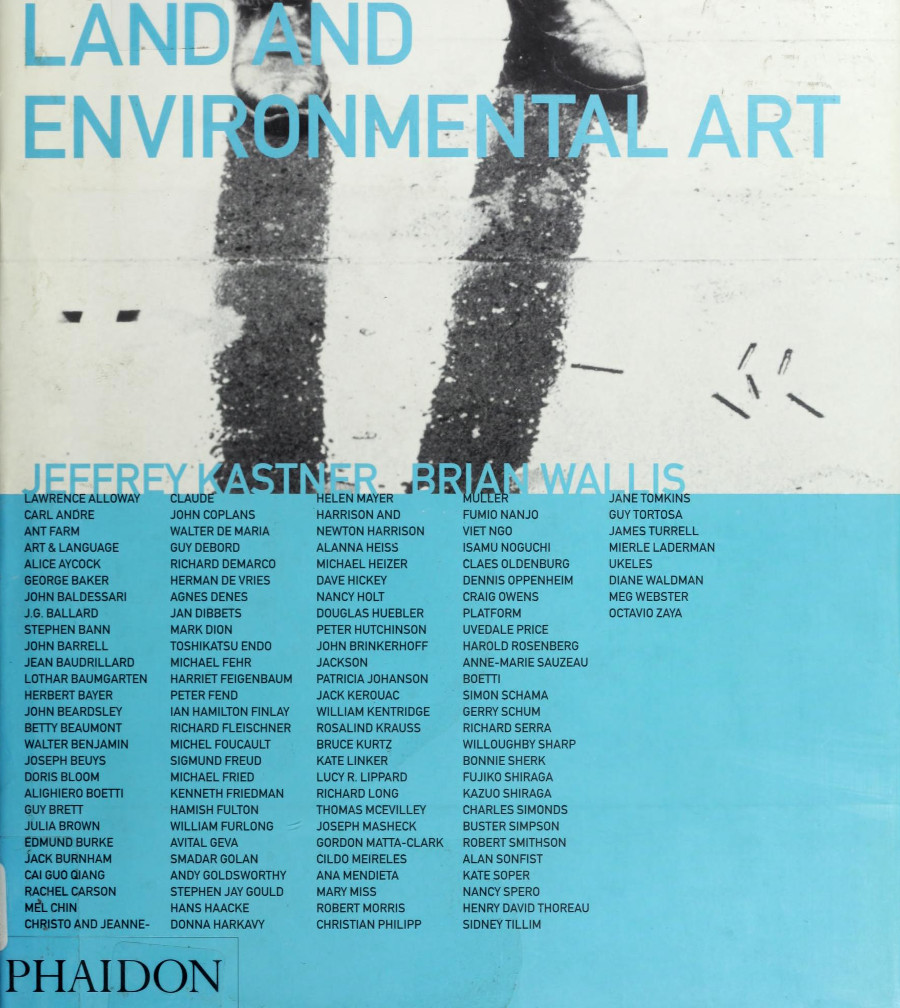Third Text, 120: Contemporary Art and the Politics of Ecology (2013)
Filed under journal | Tags: · activism, aesthetics, art, art criticism, climate crisis, contemporary art, earth, ecology, environment, oil, politics, postcolonialism, visual culture

“This special issue of Third Text investigates the intersection of art criticism, politico-ecological theory, environmental activism and postcolonial globalization. The focus is on practices and discourses of eco-aesthetics that have emerged in recent years in geopolitical areas as diverse as the Arctic, Nigeria, Bangladesh, Indonesia, Europe and Mexico. The numerous contributors address new aesthetic strategies through which current ecological emergencies – including but not limited to the multifaceted crisis of climate change – have found resonance and creative response in artistic practice and more broadly in visual culture.” (from the Introduction)
With contributions by Christoph Brunner, Roberto Nigro, Gerald Raunig, Jessica L Horton, Janet Catherine Berlo, Jimmie Durham, Subhankar Banerjee, Nabil Ahmed, Berin Golonu, Basil Sunday Nnamdi, Obari Gomba, Frank Ugiomoh, Ursula Biemann, Peter Mörtenböck, Helge Mooshammer, Patrick D Flores, Raqs Media Collective, Luke Skrebowski, Emily Apter, Steven Lam, Gabi Ngcobo, Jack Persekian, Nato Thompson, Anne Sophie Witzke, Liberate Tate, TJ Demos, Eduardo Abaroa and Minerva Cuevas.
Guest editor: TJ Demos
Publisher Third Text, London, January 2013
175 pages
PDF (10 MB)
Online supplement (contains another 6 articles + introduction)
Jack Burnham: The Structure of Art (1971/1973)
Filed under book | Tags: · aesthetics, art, art theory, avant-garde, cybernetics, semiotics, structuralism, systems theory

Jack Burnham was a writer on art and technology, curator of the 1970 Software show, and one of the main forces behind the emergence of systems art in the 1960s. In his second book, The Structure of Art, Burnham “developed one of the first systematic methods for applying structural analysis to the interpretation of individual artworks as well as to the canon of western art history itself.”
Publisher George Braziller, New York, 1971
Revised edition, 1973
ISBN 0807605956, 9780807605950
195 pages
PDF (69 MB, no OCR)
PDF (19 MB, OCR’d version via Marcell Mars, added on 2015-4-16)
PDF (83 MB, no OCR, added on 2023-8-4)
Jeffrey Kastner, Brian Wallis (eds.): Land and Environmental Art (1998)
Filed under book | Tags: · aesthetics, architecture, art, art history, art theory, ecology, environment, land art, landscape, nature, sculpture

“The traditional landscape genre was radically transformed in the 1960s when many artists stopped merely representing the land and made their mark directly in the environment. Drawn by the vast uncultivated spaces of the desert and mountain as well as post-industrial wastelands, artists such as Michael Heizer, Nancy Holt and Robert Smithson moved the earth to create colossal primal symbols. Others punctuated the horizon with man-made signposts, such as Christo’s Running Fence or Walter de Maria’s Lightning Field. Journeys became works of art for Richard Long while Dennis Oppenheim and Ana Mendieta immersed their bodies in the contours of the land.
This book traces early developments to the present day, as artists are exploring eco-systems and the interface between industrial, urban and rural cultures.”
Edited by Jeffrey Kastner
Survey by Brian Wallis
Publisher Phaidon Press, 1998
ISBN 0714835145, 9780714835143
304 pages
Review: Boettger (CAA.Reviews, 1999).
PDF (117 MB, no OCR)
For more on land art see Monoskop wiki (includes a select bibliography and collection of links to online documentation of the works by early land artists).
Comment (0)
